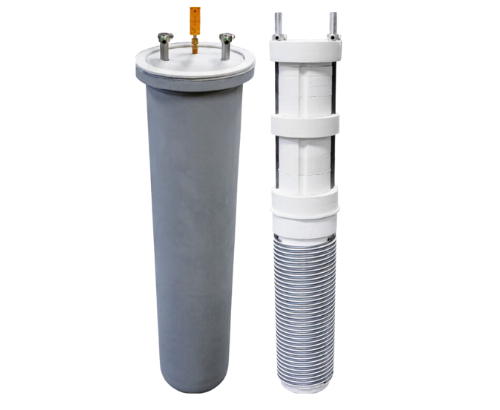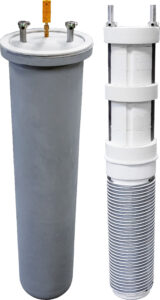 Immersion heaters are crucial components in the efficient operation of melting processes, but like any equipment, they can experience failures. It’s essential to understand the most common immersion heater failure modes and how to address them to maintain productivity and safety in your operations.
Immersion heaters are crucial components in the efficient operation of melting processes, but like any equipment, they can experience failures. It’s essential to understand the most common immersion heater failure modes and how to address them to maintain productivity and safety in your operations.
Commitment to Quality and Service
Firstly, it’s important to note our commitment to quality and customer service. Should an immersion heater fail at a weld or bend, we will replace it promptly at no charge. Additionally, if you receive a heater with any ceramic ribs broken before installation, you can return it to us for a replacement. We pride ourselves on using consistent, high-quality heater wire from Sweden across all our heaters, albeit in varying gauges to meet different requirements. To learn more about our immersion heaters and find the perfect fit for your needs, feel free to view our products here.
Common Causes for an Immersion Heater Failure
One frequent issue arises from sludge that forms during the melting process. This sludge can spill from the bull ladle and adhere to the upper surface of the heater tube, leading to failure. This sludge, if not managed properly, can be detrimental to heater operation.
Remedies for Sludge Build-up
- Proper Disposal: Ensure that any remaining sludge in the bull ladle is emptied into a designated waste receptacle.
- Regular Maintenance: Regular scraping of the tubes is essential to prevent sludge accumulation.
Other potential immersion heater failures involve more technical aspects of the heater setup:
- Improper PID Loop Settings: Adjust the PID loop to modify power incrementally, ideally at about 2% per minute, to prevent abrupt temperature changes.
- Issues with SCR Fuses: Using the correct fuses is critical, as substitutes can lead to catastrophic failures, with molten metal splashing inside the tube. Ensure you use the quick fuses supplied with most SCR units.
- Incorrect Power Transformer: Sometimes, in the rush to meet delivery deadlines, a higher voltage transformer (220 V or 240 V) might be used instead of the preferred 200 V. This can be mitigated by setting the maximum output of your controller to 90%, which helps in reducing stress on the heater.
Optimizing Heater Lifespan
The lifespan of your heater can be extended significantly by managing the maximum temperature. According to the wire manufacturer, reducing the wire’s maximum temperature by 100 degrees Fahrenheit could double the life of the heater. Additionally, consider the configuration of your furnace; if it uses two heaters, check if a phase angle or zero crossover SCR firing is more beneficial. Some SCR units offer switchability, which can be advantageous.
By understanding these common failure points and implementing the suggested remedies, you can enhance the reliability and efficiency of your immersion heaters, ultimately saving time and reducing costs in your melting operations.


